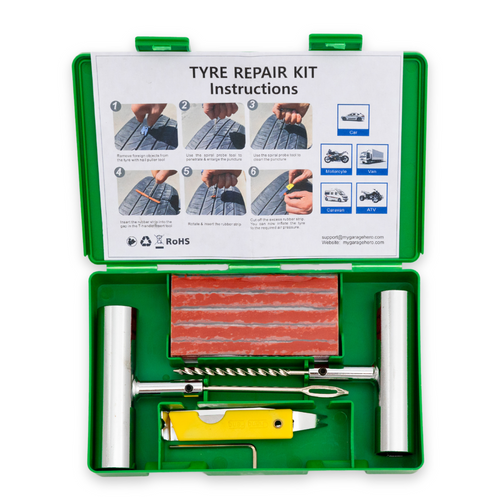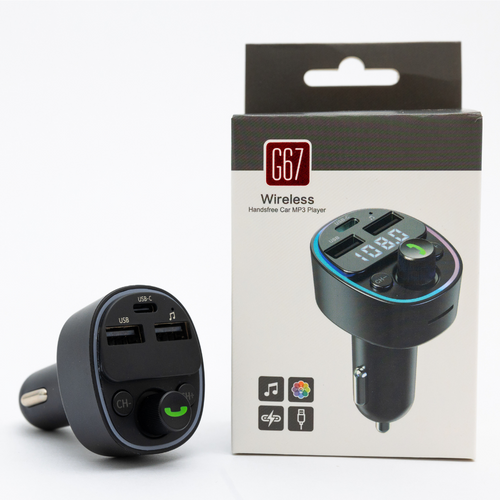We've all had that moment: you get in your car, turn the key, and... nothing. The engine’s dead. Maybe the lights were left on overnight, or maybe your battery’s just given up. Whatever the reason, it’s a frustrating situation—especially if you’re in the middle of nowhere.
Enter the auto jumper.
This blog will break down exactly what an auto jumper is, how it works, and when you should have one in your car. We’ll also show you why the Boost N’ Inflate from My Garage Hero is a smarter, more versatile alternative to old-school jumper cables.
What Is an Auto Jumper?
An auto jumper (also called a jumper starter, booster pack, or jump starter) is a compact power device used to restart a vehicle with a dead battery—without needing another car.
Auto Jumper vs Traditional Jumper Cables
Jumper cables rely on a second vehicle’s battery. Auto jumpers? They carry the power themselves. That means you can be completely alone and still get your car going.
Other Names You Might Hear
-
Jump starter pack
-
Portable car battery jumper
-
Booster pack
-
Lithium jump starter
They all do the same core thing: bring your dead battery back to life.
How Do Auto Jumpers Work?
Inside an auto jumper is a lithium or lithium-ion battery pack. When connected to your car's battery terminals, it delivers a surge of electricity strong enough to crank your engine.
Step-by-Step: How to Use One
-
Turn off your vehicle.
-
Connect the jumper’s clamps to the battery terminals (red = positive, black = negative).
-
Power on the jumper and wait for the green light.
-
Start your engine.
-
Once running, disconnect and store safely.
It’s quick. It’s safe. And it puts the power back in your hands.
When Should You Use an Auto Jumper?
Signs Your Battery’s Flat:
-
You hear a clicking sound when you try to start.
-
The interior lights or dash flicker and die.
-
Nothing happens at all when you turn the key.
Emergency vs Preparedness
Auto jumpers aren’t just for emergencies—they’re also a smart part of your roadside safety kit. Long trips, cold weather, or an older battery? You’ll want one on board.
Choosing the Right Auto Jumper
Not all jumpers are created equal. Here's what matters:
Key Features to Compare
-
Cranking Amps / Peak Amps: Higher is better for larger engines.
-
Battery Capacity: Measured in mAh—more juice means more starts.
-
Safety Protections: Look for reverse polarity protection, spark-proof clamps.
Bonus Features
-
USB ports to charge phones
-
Built-in torch/flashlight
-
Air compressor (like Boost N’ Inflate)
Why We Recommend the Boost N’ Inflate
The Boost N’ Inflate isn’t just an auto jumper. It’s a full-blown roadside rescue tool.
4-in-1 Functionality
-
Jump starter
-
Tyre inflator
-
Power bank (USB + USB-C)
-
SOS light
Real-World Use Case
Picture this: You’re deep in the bush, your phone’s flat, your tyre’s soft, and your car won’t start. Boost N’ Inflate handles all three—no waiting for roadside assistance.
Final Word: Be Prepared Before You Need It
No one plans for a flat battery. But you can prepare for it.
The Boost N’ Inflate gives you control, confidence, and peace of mind—whether you’re driving across Sydney or outback.
Ready to be your own hero on the road?
FAQ: Auto Jumpers
What’s the difference between an auto jumper and a jump starter?
Nothing—same function, just different names.
Can I use an auto jumper if my battery is completely dead?
Yes, most modern lithium jump starters can handle even deeply discharged batteries.
How long do auto jumpers last?
Usually 2–5 years depending on use and storage. Keep it charged every 3 months.
Do I still need jumper cables?
Not really. Auto jumpers are safer, easier, and don’t require another vehicle.
What size jump starter do I need?
For small cars, 400–600A is fine. For larger engines (4WDs, utes), look for 800A+ like the Boost N’ Inflate.




